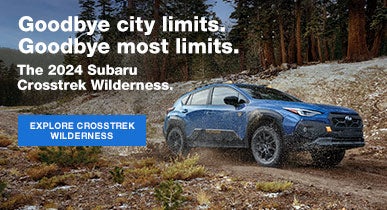Friday, 27 December, 2019
Tips For Safe Mountain Driving
How To Drive Safely In The Mountains
We all love that great vacation road trip but if involves driving through the mountains, drivers may be concerned — and reasonably so. Driving in the mountains can be difficult, with steep grades, narrow lanes, heavy trucks, and weather conditions that can change quickly. It is also hard on your vehicle, so here are some basic tips to help you navigate the great mountain road trip vacation.
First, be sure your vehicle is in prime operating condition, including the brakes, windshield wipers, defroster, heater, and exhaust. If you’ve not regularly had your brake and transmission fluids flushed according to your manufacturer’s recommendations, it’s a good time to have that done. Brake fluid absorbs moisture as it ages, and that lowers its efficiency. Frequent braking (like going down mountains) can overheat the fluid and you may lose braking power when you need it the most. Check your tires and make sure they are in good condition and properly inflated.
Before you leave, grab a paper map of the area and map out your route. Your favorite navigation app may be awesome, but in the mountains cellular service and data may be nonexistent, rendering your app useless. A paper map is always a reliable backup. When planning your trip, include plenty of time for breaks because navigating mountain roads is more fatiguing than flatland driving.
Bring extra drinking water with you and remember to stay well-hydrated throughout your trip. Dehydration makes symptoms of altitude sickness occur faster at high elevations. Even if you have mild altitude sickness symptoms, it can affect your alertness, so don’t be afraid to stop for a break for few minutes and rehydrate.
Preparing For Your Mountain Road Trip
When preparing for your trip, be ready for emergencies. Sudden weather changes or an accident can leave you stranded in rural mountain areas for hours. Be sure to share your plans with a friend or family member, including where you are going and when you expect to return. Pack extra water, food, warm clothing, a first aid kit, and a simple tool kit that can help get you by if road service isn’t available. Be sure to pack a shovel and an ice scraper because in the mountains the weather can change dramatically in a short period of time.
Fill up your gas tank and be sure to maintain a full enough tank to get to your destination. Climbing steep grades requires more fuel than a typical Sunday drive, and gas stations may not be in convenient locations. Also remember that cell phone service can be spotty at best, so if you run out of gas you might not be able to call road service. And most mountain roads have small shoulders, minimum visibility, and not many places to pull off, putting you at risk of being hit by another vehicle if you do run out of gas.
On The Steep And Winding Mountain Roads
When climbing steep grades, higher elevations diminish a vehicle’s horsepower, and your car may not perform as well. Downshift out of overdrive and into a lower gear and keep a close eye on your temperature gauge. Even in cooler weather, the work it takes to climb mountains can cause your vehicle to overheat. If your temperature gauge starts to climb, turn off the air conditioning or defroster (most people don’t realize the defrost setting actually runs the air conditioning to dry the air inside the vehicle.) If your windows are fogging up, turn the heat up (which also helps cool the engine) and move the air control setting to blow on the windshield.
If your vehicle is still overheating, find a safe place to pull off, park the car, and let it run for a few minutes. Don’t shut off the engine right away — the coolant needs to circulate and needs to run the fan to cool the engine.
Remember to never remove a hot radiator cap! If you need to add coolant, use the coolant reservoir and wait until the car has cooled down. And it’s always a good idea to give your car a chance to cool down by letting it idle for a few minutes every time you stop or park before you shut the engine off.
When heading down the mountain, a good rule of thumb is to not go down any faster than you were able to go up the mountain. Shift your car into a lower gear and use the transmission to hold your vehicle speed. It may sound like your engine is revving high because of the lower gear, but that is the engine helping to keep your vehicle at speed. Use your brakes as little as possible, and if you do use them, apply them gently and release. Don’t stay on the brakes, because they will quickly overheat and it will substantially reduce the ability of your brakes to do their job.
While you’re on the road, try not to get in front of semis on a downhill run. Truck drivers use the momentum from going down the hill to help them get up the next mountain — and you don’t want to get in their way. And don’t ever park on or block a runaway truck ramp. Those are for trucks with overheated brakes to pull safely off the highway and blocking a truck ramp would really put yourself in harm’s way.
Whether you’re going up or down the mountain, stay in the center of your lane and on your side of the road. Remember that mountain roads are narrower than interstate highways, so slow down and be aware of your vehicle placement. And be sure to leave extra space between yourself and vehicles you are following because sudden stops can happen at any time. Rocks or wildlife in the road can create sudden and unpredictable hazards, so be ready and always anticipate what might be around the next curve.
Speaking of animals, if you see deer near the road, slow down. Deer are prone to run into traffic when spooked. If that happens your best approach is to brake for the deer. On curvy mountain roads it is an especially bad idea to swerve to avoid the deer. Also remember if you see a deer in front of you, there are usually several more nearby. Be extra cautious just before dawn and just before and after dusk when deer are the most active.
Driving slower than usual is the safe way through the mountains, whether it’s to view scenery or because of a steep grade, but if traffic starts stacking up behind you, pull over and let them pass. In many states, failure to allow traffic to pass can result in a traffic ticket. If you get off the highway to continue your trip on narrow local roads, remember that the car going uphill should always be given the right of way.
Of course, the most important tip for mountain driving is relax and have fun! You’ll soon discover why so many road trippers opt for routes through mountains whenever they have the chance.Stop by Neil Huffman Subaru in Louisville today and check out a sure-footed Subaru vehicle with all-wheel drive for all your mountain adventures!

















